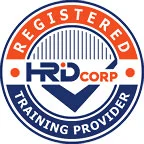High Voltage Training
Course delivers safety requirements for high voltage equipment & HV maintenance entry levels and introduces HV Power system composition requirements to HV protection systems. There are two level of this course - operational and management.
Purpose
Teach the participants to realize safety requirements for high voltage equipment & HV maintenance entry levels. Introduce HV Power system composition requirements to HV protection systems. Explain main HV system components: generators, motors, switchboards, circuit breakers, control relays and transformers. Introduce system documentation so that they can follow correct procedure to perform periodic maintenance in a safe manner
High Voltage Training course covers the following topics:
- Pertinent regulatory matters (IMO, flag state, company specific)
- Electrification
- Regulations
- Alternators and Automatic Voltage Regulators (AVR)
- Medium voltage switchgears
- Hands on exercises
- MV / LV transformers
- Power distribution
- Safety of operations
Special (customized) content of the Marine High Voltage course may be
adopted, as per customer specific requirements.
Assessement
At the end of the course, every trainee will take a written examination.
A certificate confirming student's success at achieving a minimum 75% pass will be issued at the end of the course.
In the event of an unsuccessful result, (examination mark below 75%) trainee is recommended to go through the received course material in soft copy at home & pass a re-test exam in 2 (two) working days.
Certified chief engineers, engineers, electrical/electronic engineers (ETO) and maintenance personnel on board who are responsible for the daily maintenance of the High Voltage systems.
Reviews - High Voltage Training
- The course is very useful with good information and helped me to understand more about the High Voltage.The instructor highly qualified and experienced.
-
The course is very useful with good information and helped me to understand more about the High Voltage.The instructor highly qualified and experienced. (Posted on 12/2/2025) - Excellent learning experience
-
The course was very informative and up-to-date. The instructor was highly qualified and experienced, making the lessons easy to understand. All questions were answered clearly, and the overall learning process exceeded my expectations. (Posted on 11/28/2025) - Valuable Lesson for HT
-
Good Lecture. Learnt a lot of HT info. Especially on Maritime field. (Posted on 11/25/2025) - High Voltage
-
Overall all is satisfactory.
Instructor is very helpful.
Have many good notes from many source to reference.
Thanks . (Posted on 11/17/2025) - Satisfactory
-
The materials were good and the instructor was knowledgeable. (Posted on 11/4/2025) - Excellent
-
The instructor was highly qualified and experienced, ready to answer any questions, and met my expectations of the course. (Posted on 10/17/2025) - Outstanding
-
The instructor (Mr. Sergiy) done a great job in explaining the content of the course. Highly recommended. (Posted on 10/17/2025) - Excellent and easy for understanding every topics
-
It was very useful and helped me understand how to handle high voltage equipment safely on board. The instructor explained the theory clearly and gave good examples. Overall, it was a good learning experience and important for working with electrical systems on ships. (Posted on 10/3/2025) - High voltage course
-
The course was very helpful for me to understand everything I need to handle with high voltage safety. (Posted on 9/15/2025) - Satisfactory
-
The instructor is very helpful. I will recommend to other colleagues. (Posted on 9/12/2025) - Highly Recommended
-
I recently completed the High Voltage Course and was thoroughly impressed with the quality of the training. The course content was well-structured, comprehensive, and up-to-date with current industry standards. It covered everything from safety protocols and system design to maintenance and fault diagnosis, giving me a solid understanding of high voltage systems. (Posted on 9/3/2025) - Good explanation
-
The trainer is experienced in teaching the skill. Comes with a good, useful note. Also the trainer provides an after training QnA. (Posted on 9/2/2025) - informative, and helpful for shipboard electrical safety and operations.
-
It was very useful and helped me understand how to handle high voltage equipment safely on board. The instructor explained the theory clearly and gave good examples. Overall, it was a good learning experience and important for working with electrical systems on ships. (Posted on 8/15/2025) - Good experience
-
The instructor is very helpful and a good mentor. I recommend it for seafarers who are looking for STCW training! (Posted on 8/15/2025) - Excellent training
-
Had complete and useful guide during training course conducted. (Posted on 8/4/2025) - All good and easy
-
At first when try to book all is well and the person in charge explain well. The instructor also good and easy to understand. (Posted on 8/1/2025) - Highly recommended
-
Great experience having training with them. They provide lots of notes and guidelines for me to be a competence seafarer. (Posted on 8/1/2025)
Want to know more about High Voltage Training
Get in touch with our bookings team on +6014 325 6625 or email the team at lerus.asia@lerus-online.com









